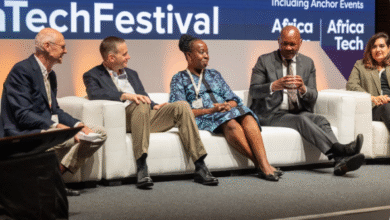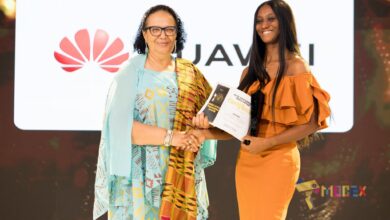Monzo and MoMo: Two Fintechs, Two Worlds, One Truth About the Future of Money

In the increasingly bifurcated world of financial innovation, where Venture Capitalist (VC) cash chases unicorns in glass towers and billions of transactions are routed through kiosks in dusty towns, two stories stand out. Monzo in the United Kingdom and MTN Mobile Money (MoMo) in Ghana.
At first blush, they look like the fintech equivalents of oil and water. One is a digital-only bank backed by slick interfaces, Open Banking APIs, and subscription-driven revenue. The other is a telecom-born mobile money platform navigating patchy data coverage, feature phones, and the ghosts of financial illiteracy. But in the global race to digitize finance, both have achieved something striking, they’ve redefined what financial inclusion looks like albeit from opposite directions of the economic spectrum.
Let’s start with Monzo, Britain’s favorite banking upstart, where millennial pink cards have become the accessory du jour. Launched in 2015, Monzo built its reputation on transparency and user experience, eschewing the ponderous legacy of traditional banks for agile, app-driven service. As of early 2025, the bank has 9.3 million users, achieved £15.4 million in profits, and is valued at over £4 billion. A tidy trajectory for a company that posted a £116.3 million loss just two years prior.
Monzo’s appeal lies in its ability to simplify the complex, real-time spending notifications, virtual cards, granular budgeting tools, and subscription models like Monzo Extra, Flex, and Premium. Under the hood, the bank runs a cloud-native stack, Amazon Web Services (AWS), Kubernetes, and a swathe of microservices allowing for fast deployment, modular innovation, and impressive scalability.
Still, it hasn’t been all pink and profit. Monzo’s attempt to crack the U.S. market was thwarted by regulatory drag and the cautious instincts of American banks. And let’s not forget the 2020 FCA investigation, the PIN-logging debacle or the existential dread of monetizing a customer base that prefers free to freemium. The pivot toward lending and fee-based services is both necessary and telling.
Now shift continents and lenses. Enter MTN MoMo, launched in Ghana in 2009, not as a bank but as a solution to the great African paradox, a continent brimming with economic potential yet hamstrung by financial exclusion. Fast forward to 2025 and MoMo boasts over 28.5 million active users in Ghana alone. The volume of transactions processed through the platform in Q1 2025 was about GH¢649.2 billion which is roughly $54 billion or about 70% of Ghana’s GDP.
Pause on that for a second. One mobile platform, operated by a telecoms company, channels more economic activity than the entire formal banking sector combined. Let that sink in. Has it sunk yet?
Where Monzo optimizes, MoMo democratizes. It delivers access to the unbanked through a network of 411,000 active agents, many in rural or peri-urban areas where bank branches are nonexistent and smartphones are still aspirational. MoMo thrives on USSD, not UI (I see some progress to cross a chasm to get the UI more useful in that space). And yet, it supports a suite of services from peer-to-peer transfers and bill payments to government disbursements and microloans at a scale and velocity that would make any neobank blush.
In 2024 alone, MoMo’s revenue surged by 54% to GH¢4.4 billion (approx. $365 million), accounting for nearly 25% of MTN Ghana’s total revenue. It’s no surprise then that MTN has invested over GH¢3.1 billion in network upgrades and digital infrastructure, betting on the long tail of inclusion as the next growth frontier.
Critically, MoMo’s financial footprint is not just commercial it’s macroeconomic. Ghana’s unbanked rate fell from 58% in 2010 to 29% in 2025, a drop directly tied to the spread of mobile money, arguably. Government-to-person payments over GH¢1.3 billion disbursed via MoMo between 2023 and 2025 are now routine. Informal trade has been digitized. Market women and micro-retailers who once operated in cash-only silos now access working capital, savings tools and microinsurance via mobile phones that cost less than $30.
Yet, herein lies the rub, while both Monzo and MoMo are fintechs, they are not in the same business. Monzo refines finance for those who already have access while MoMo creates access where none existed. Monzo is a challenger bank in a developed, regulated, and saturated market. MoMo is a foundational infrastructure in a developing, underbanked and fluid ecosystem.
Their divergence reveals something profound, fintech’s future is not about copying and pasting the Monzo model into Accra or Nairobi. Nor is it about turning MoMo into a sleek European neobank. Rather, it’s about understanding context about building systems that respond not only to customer expectations but to socioeconomic realities.
There is of course, convergence on some fronts. MoMo is evolving. The recent partnership with Mastercard now allows users to pay on global e-commerce platforms. Some partners are working with MTN on AI-powered credit scoring for microloans. And there are whispers, still whispers about seeking a digital banking license. I have been wondering if the value proposition still remains not to become Ghana’s Monzo but to remain Africa’s most pervasive financial utility.
For investors, this bifurcation is both a challenge and an opportunity. On the one hand, Western neobanks like Monzo face margin pressure and costly customer acquisition in markets where switching banks is more emotionally than financially driven. On the other, African mobile money platforms like MoMo continue to generate strong growth off relatively modest ARPU bases, driven by scale, volume and network effects.
In other words, Monzo’s success lies in upgrading user experience. MoMo’s in upgrading human experience.
If you’re looking at the next billion fintech users from Mumbai to Mombasa to Manila they’re not asking for FX hedging or robo-advisory. They want to pay school fees, access healthcare, send money across villages or borders and build credit histories one cedi, rupee, or peso at a time.
That’s where the big story lives. Not in who builds the next flashy app but in who designs platforms that fit into the rhythms of real lives. Fintech’s most meaningful innovations won’t be the sexiest ones they’ll be the ones that work offline, on feature phones, with human agents and without a Silicon Valley UX designer in sight.
So, as the digital finance sector continues to attract capital $160 billion in global fintech investment in 2023 alone, per CB Insights it’s worth asking, are we funding finance for the privileged or infrastructure for the many?
The truth is, the next decade of fintech will be defined not by who banks the already banked better, but by who banks the rest differently.
And in that truth, Monzo and MoMo, despite their disparities, are not competing stories they are complementary case studies. Two faces of a fractured but converging future.




